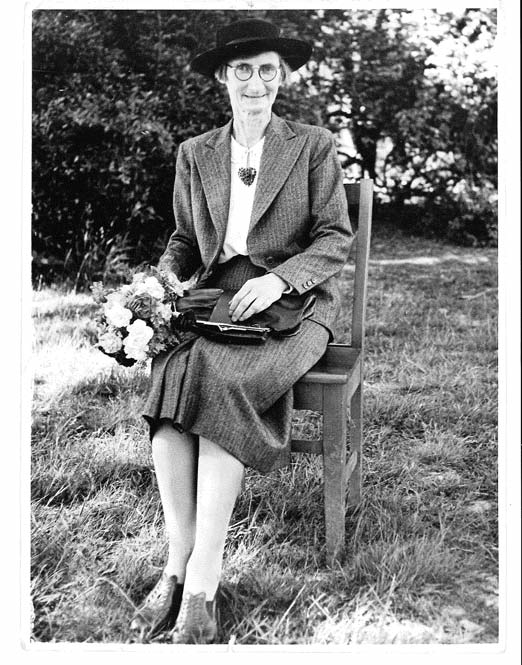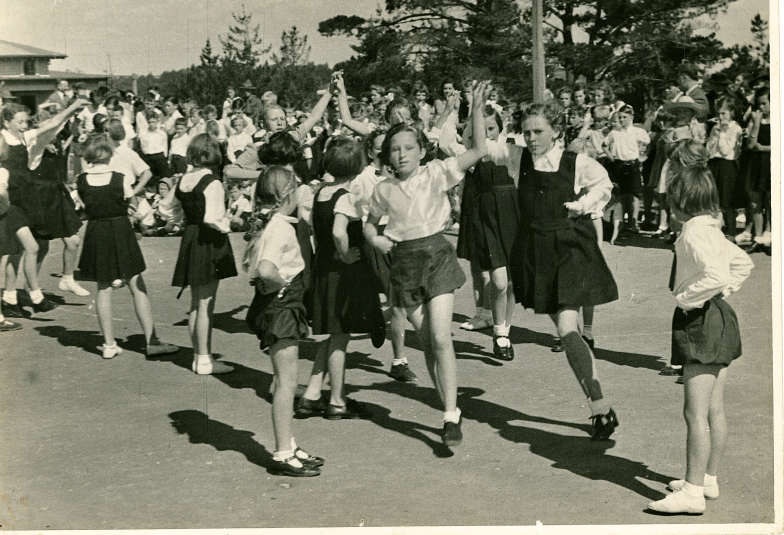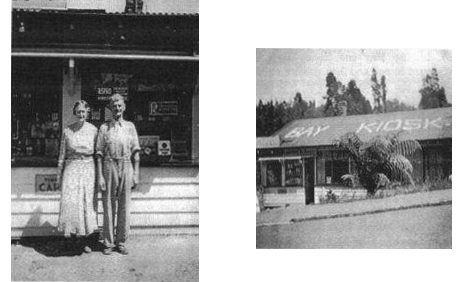Alfred (Fred) and Margarette (Daisy) Thom lived in Folke Street, New Lynn, with their family and Daisy’s widowed mother. The children attended New Lynn Primary School and the whole family participated in the New Lynn community life, with Fred serving on the New Lynn Town Board.
However, they spent every free minute over at Blockhouse Bay, fishing, swimming, picnicking and camping in the summer holidays and on long weekends when the weather permitted. As the years passed, Fred became aware of how popular the area was becoming, both with summer campers and with more and more permanent residents as well as day visitors. He decided the time was just about right to build a store down near the beach as the only drawback for campers and residents down at the bay was the steep climb up from both Blockhouse Bay and Sandy Bay to Wynyard Street, and then another climb up to the shops in the Village. (Wynyard Street was much steeper then, as can be seen looking down from Gilfillan t, the original street on the high ground bordered by a white railing.)
Continue reading






